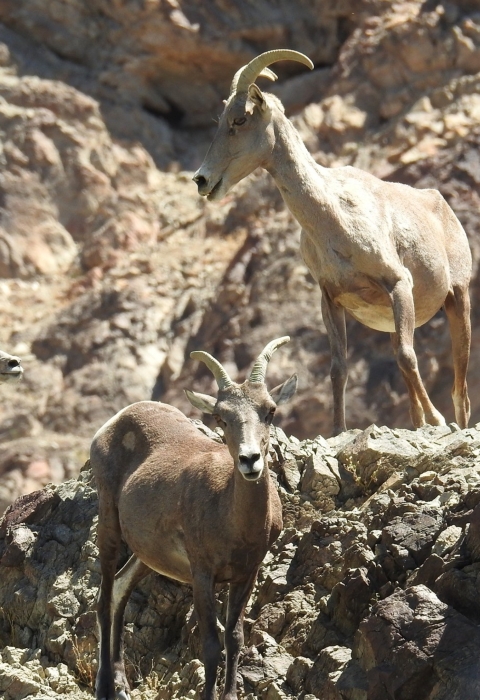Seasons of Wildlife
Waterfowl and neotropical migratory birds abound at Imperial National Wildlife Refuge during the spring and fall migration. Resident wildlife such as mule deer, Gambel’s quail, coyote, and desert bighorn sheep can be found on the refuge year-round.
Featured Species
Thirty miles of Colorado River wind through the protective boundaries of the refuge, including one of a few remaining sections of the mighty river that is not channelized. At the northern range of the Sonoran Desert, the refuge includes upland desert habitat, marshes, and Colorado River backwaters.
During low flows, numerous sandbars are exposed and used by waterfowl, marsh birds, and wintering bald eagles. Plants ranging from sago pondweed to common cattail provide places for wildlife to rest, nest, feed and prosper. Ducks, geese, and marsh birds flock to the lower Colorado River each year to spend the winter. Wetland wildlife is most abundant in winter, when migrants such as cinnamon teal and northern pintail use the refuge. During the summer months, look for permanent residents such as great egrets and muskrat. The river’s marshes and backwaters are especially important to the endangered Yuma clapper rail.
Elevation and distance from a source of water encourages a different type of vegetation than what is found by the river’s edge. Moving away from the river’s edge and up into the desert, washes cut into the landscape. While some of the wooded wash bottoms are shallow, others are deep and steep-sided. Here, ironwood, catclaw and smoke tree provide cover for western whiptail lizards and black-tailed jackrabbits. Between washes, the upland desert and mountains are sparse in ground cover. Creosote bush, palo verde and ocotillo dominate the uplands. Dawn and dusk are the best opportunities to see desert bighorn sheep and mule deer moving down to the river for a drink.
